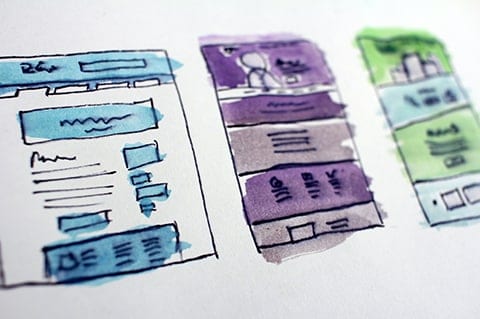 Website design standards are continually evolving and adapting. The technology on hand to the general public has a significant effect on innovation in website design. Mobile traffic now accounts for more than half of total internet use, making a mobile responsive website necessary. The design elements you include on your website can help you gain opportunities or lose conversions. To help clear up the confusion of what web design trends are ending or need to end, HeadsUp has compiled this list of essential website design trends to avoid this year.
Website design standards are continually evolving and adapting. The technology on hand to the general public has a significant effect on innovation in website design. Mobile traffic now accounts for more than half of total internet use, making a mobile responsive website necessary. The design elements you include on your website can help you gain opportunities or lose conversions. To help clear up the confusion of what web design trends are ending or need to end, HeadsUp has compiled this list of essential website design trends to avoid this year.
Sliders are no Longer Heroes.
During a specific period, hero image sliders were an excellent solution for designers. Before the popularity of mobile design, sliders could display a large amount of information while still conserving space. Today, sliders have taken on other forms in web design. Hero sliders often significantly slow downloading speeds and distract users from moving through your website. It’s best practice to choose one offer to present to the user above the fold and feature that offer in a single hero image or text.
External Links are Meant to Be External.
Adding links to your content is a great way to improve navigation, promote offers, and reference. However, links can hurt your site as well. Converting visitors becomes very difficult when external links replace your website in the open tab; it’s why external links should always open in a different tab. It’s even becoming common to open internal links in new tabs. Some of your website pages hold essential information and offers, and you don’t want an internal link leading your customer away from that interaction. Try to ask yourself if it’s okay to keep a link in the same browser tab when linking anything.
Non-Traditional Scrolling is Too Cool for School.
You don’t want your website visitors to have to figure out how to scroll through your content. Horizontal scrolling came on to the scene in web design a few years ago and significantly impacted some domains. This effect has since become a cheap trick. Your website is there to make conversions and generate leads. Non-traditional scrolling is usually unnecessary and will hinder the conversion process on your website. Don’t get distracted from what’s essential, and neither will your customers.
“Design elements you include on your website should help you gain opportunities, not lose conversions.”
Splash Pages Aren’t Making a Big Impact.
There’s nothing worse than clicking on a link expecting to see relevant content and offers only to be met with an annoying, seemingly never-ending, loading screen. Splash pages usually result in higher website bounce rates and slow loading speeds. The goal of good design is a fast, streamlined, intuitive experience. A splash page is anything but that.
Pop-up Windows Need to Close.
While designing your website, you might think it’s a good idea to prompt users to sign up for your newsletter by using a pop-up or modal. According to recent studies, about 30% of internet users use ad blockers or pop-up blockers, making your new CTA completely ineffective. For the other 70% of your users experiencing your modal, their regular website interaction is interrupted. Pop-ups harm your user experience and turn a chunk of your audience away from using your site. CTAs are vitally important in website marketing, but so is avoiding making them overly disruptive.
In today’s digital world, your website is often the first point of contact for potential customers. Your website has to be responsive, up to date, and on top of the current trends. HeadsUp is prepared to build a website that sets you apart from your competitors, makes conversions, and produces leads. Reach out to our web design and marketing specialists who will help you achieve real growth!
